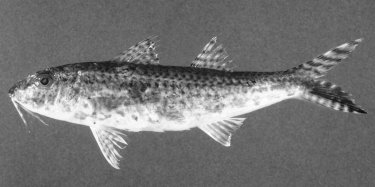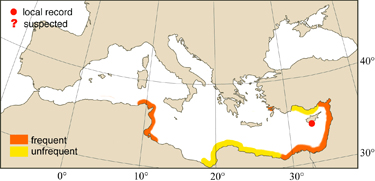
|
Relevant synonyms
Misidentification
Meristic formula
|
|
| photo : David Darom |
|
SHORT
DESCRIPTION
color :
back and sides mottled brown-reddish. Belly whitish. Upper lobe of caudal fin with 3-7 reddish-brown bars with white interspace. Lower lobe with 4-5 of the same color.
size :
common 5-14 cm (max. 17 cm). |
DISTINGUISHING CHARACTERISTICS
BIOLOGY / ECOLOGY
habitat :
benthic. Sandy and muddy substrate to 50 m. |
|
1st
MEDITERRANEAN RECORD
|

|
|
DISTRIBUTION
|
ESTABLISHMENT SUCCESS
speculated reasons for success :
|
|
|
MODE OF
INTRODUCTION |
IMPORTANCE TO
HUMANS |
|
KEY
REFERENCES
|
 Upeneus asymmetricus
Upeneus asymmetricus